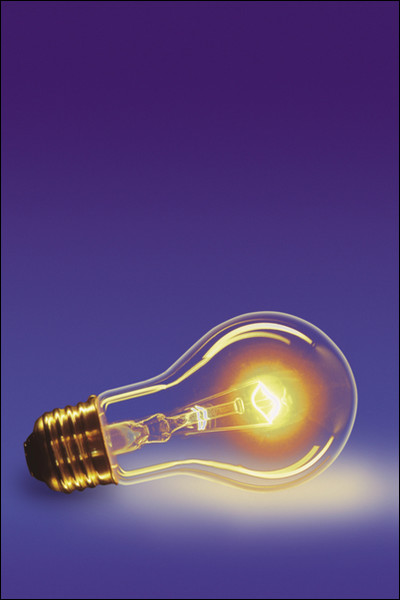The incandescent light bulb industry would like you to think that using CFLs (compact fluorescent lighting) will lead to widespread mercury contamination in your neighborhood. Thankfully, Popular Mechanics magazine did some hard science and found out how much mercury is expelled through the use of incandescent versus CFL, and it just becomes one more reason to switch. You’re probably saying to yourself, “Old-style light bulbs have no mercury, so how is this even a comparison?” That may be true, but CFLs use about 25 percent of the energy required to produce the same amount of light. That extra energy required to produce the incandescent light not only adds to your energy bill but it also requires the burning of fossil fuels here in the U.S. And guess what one of the by-products in burning coal is? DING, DING, DING, you guessed it: mercury, not to mention carbon dioxide and just about every other toxic material buried in the earth for the past 60 million years. But the burning of fossil fuels is a much bigger topic than I could get into in this post since I’m concentrating on mercury in CFLs. So, here are the numbers. One CFL contains approximately 5 milligrams of mercury contained inside it that is not released to the atmosphere and not dangerous unless you eat it. So, unless you are a circus performer, you should be okay. One incandescent bulb contains zero mercury (I still advise against consuming it). Now, here is where math comes in over the lifetime of a CFL bulb (approximately 7500 hours). A coal fired electrical plant will emit 13.16mg of mercury to sustain a 75-watt incandescent bulb but only 3.51mg to sustain a CFL that produces an equal amount of light. Since about half the electricity produced in the U.S. comes from coal fired plants, we can cut those numbers in half to 6.58 and 1.76mg respectively, so with the 5mg in the CFL and the 1.76mg from the power grid we get 6.76mg from the CFL. Whoa, now wait a minute, Mr. Popular Mechanic. That’s .18mg more than incandescent and many countries depend less on coal fired plants than the U.S.A. True, but one lead is contained and recyclable (the CFL) and the other is released into the atmosphere. Plus, if we as a country use less energy, we can use less coal-fired plants and further reduce the emissions. Now, you may be asking, “What if I break the CFL?” First, open nearby windows to disperse any vapor that may have escaped, perhaps even opening additional to create a cross breeze. Do not use a vacuum cleaner to clean up the glass. Sweep or use disposable paper towels, then wipe the area with damp paper towels and seal all of this in a plastic bag. Then call 1-800-CLEAN-UP or visit earth911.org to find your nearest disposal center.
Credit: Popular Mechanics




























